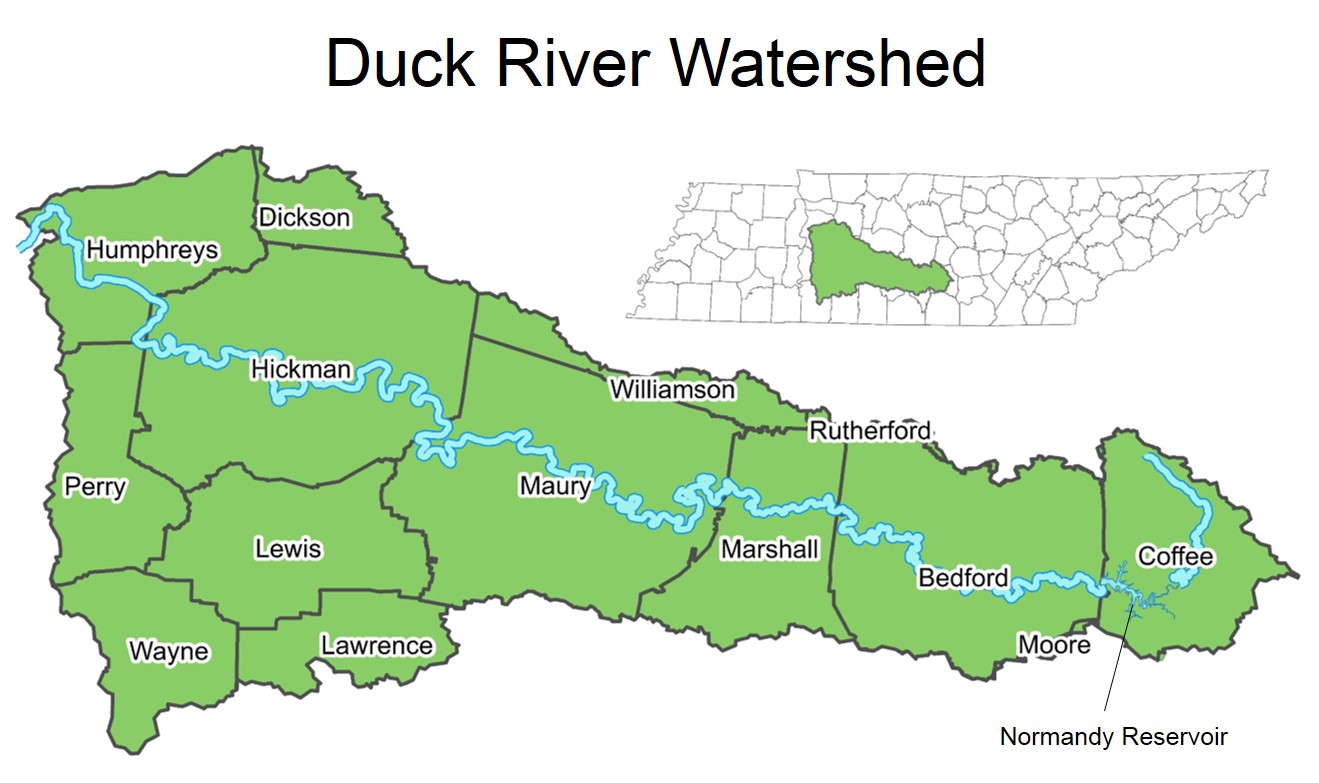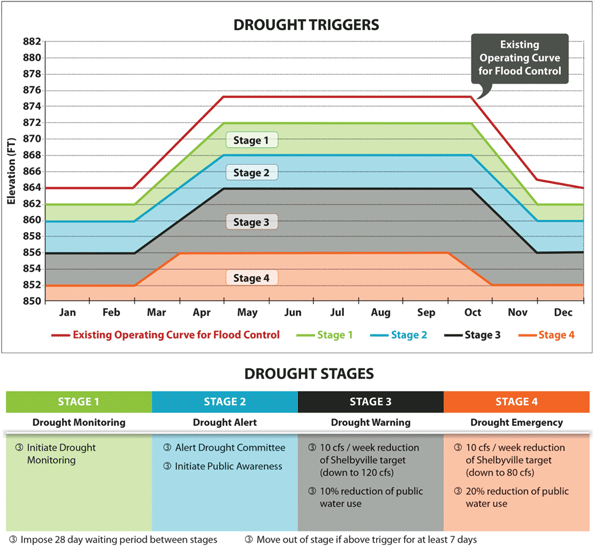Normandy Reservoir - Drought Management Plan & Optimization of Water Releases
Bedford, Coffee, Hickman, Humphreys, Marshall, Maury, Perry and Williamson Counties, Tennessee
TVA and the Tennessee Duck River Development Agency (DRA) have initiated an environmental assessment (EA) to consider alternative water release regimes from Normandy Reservoir, influencing the water flows of the Duck River. The alternatives would address how to manage Normandy Reservoir releases during drought conditions. The reservoir is important for municipal water supply in the region. TVA is also considering optimizations of its regular water release schedule to meet flow targets downstream.
Drought Management Plan
The Normandy Reservoir/Duck River region experienced severe drought conditions during 2007 and 2008. As a result, the DRA, which represents seven water utilities (serving approximately 250,000 people and industries in the region), worked with TVA and numerous consulting agencies and stakeholders to develop the Duck River Regional Drought Management Plan (DMP). The DMP, completed in 2013, is intended to mitigate negative effects of drought conditions by establishing an organized, coordinated, and staged approach to address the water supply shortages of Normandy Reservoir.

The DMP proposes four implementation stages that would be based on water levels of Normandy Reservoir. Stages 1 and 2 involve drought monitoring and public/stakeholder alerts. Stages 3 and 4 would result in seasonal changes to the TVA-managed water flow targets 28 miles downstream at Shelbyville when drought conditions are realized (see Drought Triggers in the figure below).

When Stage 3 elevations are observed in Normandy Reservoir, the flow target at Shelbyville would be reduced down from normal flows to 120 cubic feet per second (cfs), at a 10 cfs/week reduction rate. If the Stage 4 water elevation is observed, the flow target at Shelbyville would be reduced to 80 cfs, at a 10 cfs/week reduction rate.
Optimization of Normandy Reservoir Releases
Under current operation of Normandy Reservoir, TVA provides instantaneous flow (flows specified for a fixed period of time) of 155 cfs from June through November, and 120 cfs from December through May, 28 river miles downstream at Shelbyville. In addition, TVA’s current guidelines for Normandy Reservoir stipulate pool elevations of 875 feet from June through November, and 864 feet for flood control from December through May.
In 2013, the DRA developed an Optimization of Normandy Reservoir Releases (ONRR) report to assess water release modifications to precisely meet flow targets at Shelbyville, with the goal of preserving water and storage in Normandy Reservoir. A main recommendation of the ONRR was to implement a weekly average flow target at Shelbyville, instead of the current instantaneous flow targets. TVA and DRA proposes to revise its flows as follows:
- Weekly average flow of 120 cfs (measured at midnight on Sunday) for the period of December 1 through May 31, with a minimum instantaneous flow threshold of 100 cfs during this period;
- Weekly average flow of 155 cfs (measured at midnight on Sunday) for the period of June 1 through November 30, with a minimum instantaneous flow threshold of 135 cfs during this period.
Environmental Review
In the EA, TVA will analyze the environmental impacts of the drought management plan and the proposed optimization of water releases from Normandy Reservoir. Several alternatives will be considered.
In July 2018, TVA and DRA solicited input from the public on the scope of the review and potential environmental issues that should be addressed in the EA. After consideration of the public’s input, TVA will analyze the environmental consequences of alternatives and issue a draft EA for public review and comment. DRA and TVA plan to hold public meetings during the review period to provide information and solicit input. TVA expects to release the draft EA in the summer of 2019. Once the review is completed, the final recommended action(s) will be submitted to the TVA Board of Directors for approval and adopted as guidelines for future management of Normandy Reservoir.
Related Documents
Optimization of Normandy Reservoir Releases Report (PDF, 1.7 mb)
Duck River Regional Drought Management Plan (PDF, 1 mb)
Contact
For more information about the environmental review contact:
Matthew Higdon
NEPA Specialist
mshigdon@tva.gov
400 West Summit Hill Drive, WT 11B
Knoxville, TN 37902
Related Documents
Contact
More information on this environmental review can be obtained from: